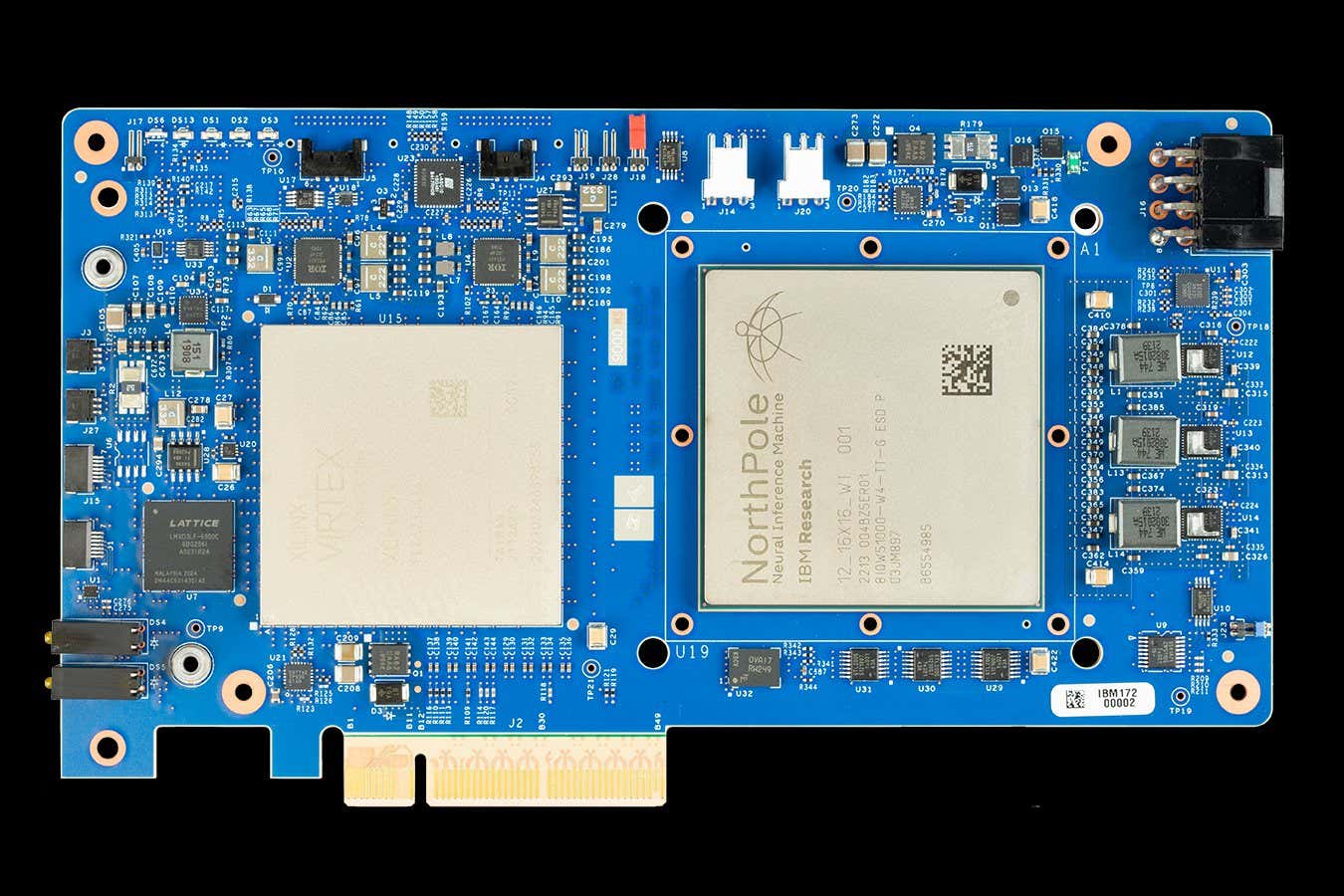An IBM chip that mimics the brain can run AI-powered image recognition algorithms 22 times faster than any commercial chip
By Jeremy Hsu
19 October 2023
The NorthPole printed circuit
2023 IBM Corp.
A brain-inspired computer chip can run AI-powered image recognition operations 22 times faster than comparable commercial chips, and with 25 times the energy efficiency.
The IBM NorthPole chip intertwines its computational capability with associated memory blocks that store information. This allows it to bypass the so-called von Neumann bottleneck – named after computing pioneer John von Neumann – which describes how modern computers slow down while waiting on information exchanges between more separated compute and memory units.
The melding of computation and memory was inspired by the way the human brain works. IBM had previously built a chip based on this idea called TrueNorth. But NorthPole transforms the technology into a digital architecture that is compatible with the silicon chip technology used in contemporary computers.
Advertisement
Read more
How to balance energy-hungry AI with the drive towards decarbonisation
“It’s a new way to look at computer architecture,” says Dharmendra Modha at IBM Research.
Modha and his colleagues designed NorthPole as a 2D array of intertwined computing cores and memory blocks. The chip’s digital architecture is also innovative in allowing each computing core to access distant memory blocks as easily as neighbouring memory blocks, write Subramanian Iyer and Vwani Roychowdhury at the University of California, Los Angeles, in a commentary article.
